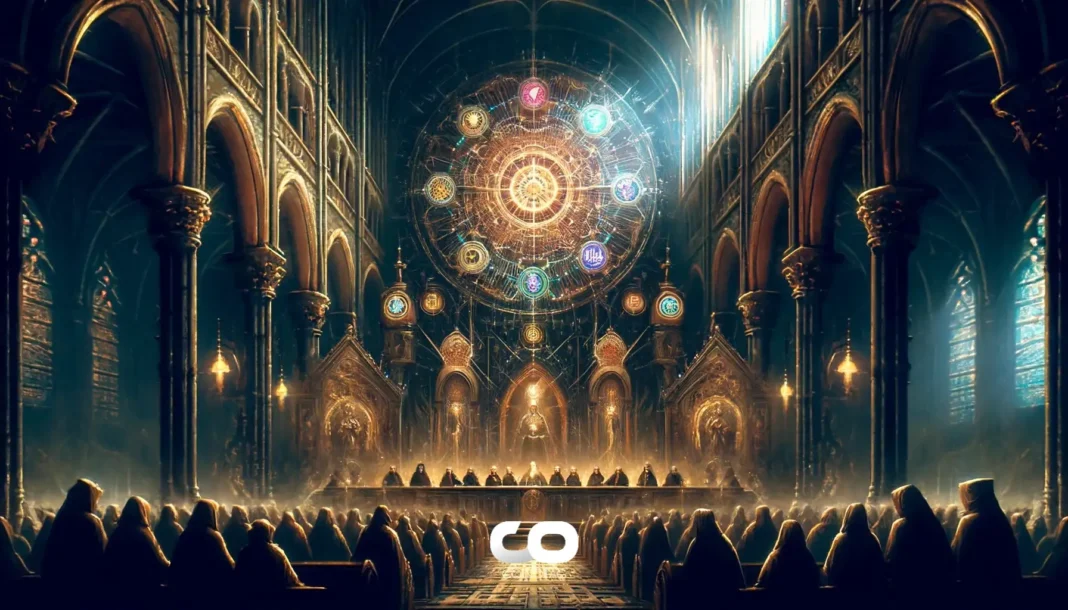-
Ripple CTO David Schwartz recently revealed his controversial role in faking fan interactions during a Q&A session with Black Sabbath, specifically manipulating responses from the late Ozzy Osbourne.
-
Despite the ethical concerns, Schwartz explained that fan interest was overwhelmingly focused on Osbourne, prompting him to use pre-written questions and censor explicit language to maintain the session’s flow.
-
According to COINOTAG, Schwartz admitted, “I cheated,” reflecting on the experience as a personal failure but a public success, highlighting the challenges of authentic celebrity engagement in digital formats.
Ripple CTO David Schwartz admits to faking fan Q&A with Ozzy Osbourne, revealing challenges in authentic celebrity interactions and fan engagement dynamics.
Ripple CTO’s Admission Sheds Light on Challenges of Authentic Celebrity Q&A Sessions
David Schwartz, Ripple’s chief technology officer, publicly acknowledged that during his tenure at WebMaster, he fabricated fan questions and curated responses for Black Sabbath members, particularly Ozzy Osbourne, during a live Q&A session. This revelation underscores the difficulties in managing real-time interactions between fans and celebrities, especially when fan interest is disproportionately focused on a single figure. Schwartz’s candid admission highlights the tension between maintaining authenticity and delivering a seamless user experience in digital fan engagements. His approach involved using pre-written “canned” questions to fill gaps and ensure all band members appeared involved, despite the overwhelming focus on Osbourne.
Fan Focus on Ozzy Osbourne Drives Q&A Dynamics
Schwartz detailed that fans showed little interest in other Black Sabbath members, with nearly all questions directed at Osbourne. This created a unique challenge in balancing the interaction to include the entire band. To address this, Schwartz requested moderators to provide questions for other members, but such inquiries were scarce. Consequently, he rotated canned questions among the band members and combined their limited responses with scripted answers from their manager. This strategy, while effective in maintaining engagement, compromised the authenticity of the interaction. Schwartz expressed regret over this, emphasizing that the session did not reflect the genuine exchange he intended to facilitate.
Censorship and Technical Constraints in Managing Celebrity Responses
Another significant aspect of Schwartz’s confession involved the editing of Osbourne’s responses. Due to poor audio quality and Osbourne’s frequent use of profanity, Schwartz censored explicit language to ensure the content was appropriate for the audience. He specifically mentioned removing the “bad C-word,” a term particularly sensitive in American media contexts. This editorial decision reflects the broader challenges of moderating live digital interactions where content must be balanced between authenticity and public standards. The technical limitations of the ConferenceRoom software further complicated the process, requiring Schwartz to rely heavily on his typing speed and judgment to deliver coherent answers in real time.
Market Impact and Cultural Response Following Osbourne’s Passing
In the wake of Ozzy Osbourne’s death, the crypto community witnessed a surge in memecoin activity inspired by the rock icon. Notably, The Mad Man (OZZY) token experienced an extraordinary price increase of over 16,800%, reaching a market capitalization of $3.85 million. This phenomenon illustrates how cultural events can significantly influence crypto market dynamics, driving speculative interest and community engagement. Such trends underscore the intersection of pop culture and digital assets, where celebrity legacies can catalyze rapid shifts in token valuations and investor sentiment.
Implications for Future Celebrity-Fan Engagement in Crypto and Digital Platforms
Schwartz’s experience raises important considerations for future digital fan engagement initiatives, particularly within the crypto space where transparency and authenticity are highly valued. The reliance on scripted content and censorship may undermine trust, suggesting a need for improved technologies and strategies that facilitate genuine interactions. Platforms must balance real-time responsiveness with content moderation, ensuring that fan experiences are both engaging and credible. This case also highlights the potential reputational risks for executives and companies involved in managing celebrity interactions, emphasizing the importance of ethical standards and clear communication.
Conclusion
David Schwartz’s admission of fabricating fan questions and censoring Ozzy Osbourne’s responses during a Black Sabbath Q&A session offers a rare glimpse into the complexities of digital celebrity engagement. While his actions addressed immediate challenges of fan focus and technical constraints, they also reveal the delicate balance between authenticity and presentation in online interactions. As the crypto and entertainment industries continue to intersect, developing transparent and innovative solutions for genuine fan engagement will be crucial. This episode serves as a valuable lesson in maintaining ethical standards while navigating the evolving landscape of digital communication.







